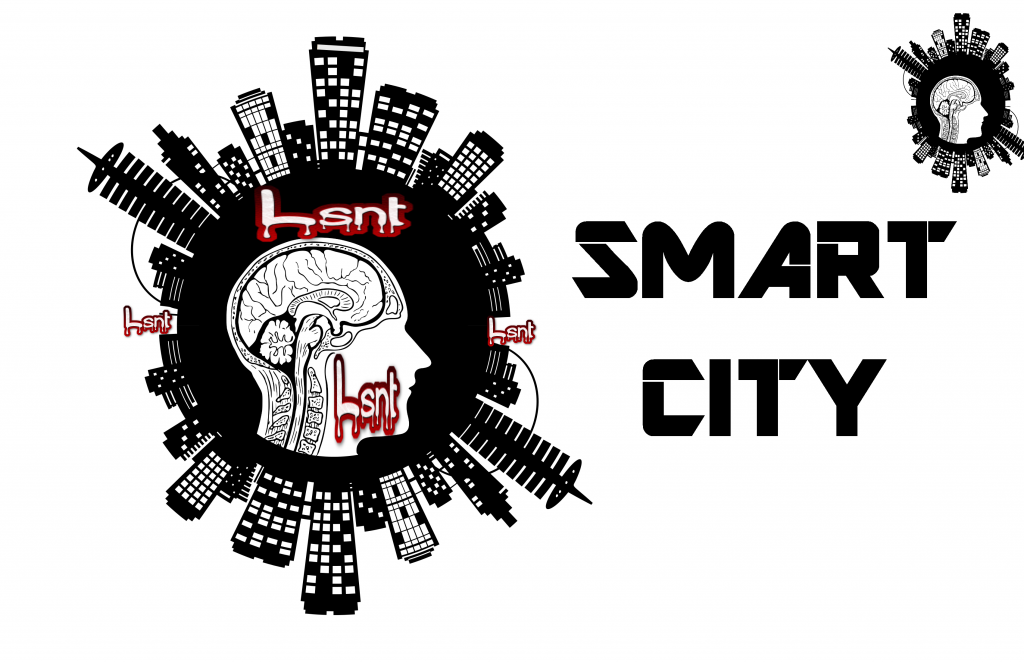Nano Technology Smart Clothing Advanced Technology Is Emerging
Harvesting The Humans, Usinghumans as a new source of power. The concept is not new but the products they are pushing are very much part of the 4th industrial revolution.

Awakened Light - LSNT
The world is changing is it not? The industrial revolution is really showing its hand. Using humans as a battery used to be the running joke as it came from the Matrix. However it is science fiction no more. Let’s talk about advanced nanotech clothing, which is a complex blend of nanotechnology, biotechnology, claytronics, metamaterials and other components which can create type of clothing previously confined. Advanced nanotech clothing is a cutting-edge development in the field of wearable technology that combines various disciplines such as nanotechnology, biotechnology, claytronics, metamaterials, and more. This innovative clothing goes beyond traditional fabrics by incorporating nanoscale components and functionalities, offering a range of advanced features and capabilities.
Nano Technology Smart Clothing, Key Aspects & Components

Advanced Nanotechology Clothing Explored
Nanotechnology: Nanotechnology involves manipulating matter at the nanoscale level, which allows for the creation of unique materials and structures with enhanced properties. In nanotech clothing, nanomaterials are utilized to impart special functionalities like self-cleaning, water and stain resistance, UV protection, and even conductive properties for data transmission.
Biotechnology: Biotechnology plays a role in advanced nanotech clothing by incorporating biological elements into the fabric. This can include incorporating natural fibers or biomaterials that are responsive to environmental factors, such as temperature-regulating fabrics that adapt to the wearer’s body heat.
Claytronics: Claytronics, also known as programmable matter, involves the use of tiny modular units called “claytronic atoms” or “catoms.” These catoms can self-assemble and reconfigure to create different structures. In nanotech clothing, claytronics may be used to create dynamic, shape-shifting textiles that can adapt to different conditions or change their appearance.
Metamaterials: Metamaterials are artificially engineered materials that exhibit unique properties not found in nature. These materials are designed to manipulate light, sound, or other forms of energy. In nanotech clothing, metamaterials may be used to create fabrics with exceptional properties, such as invisibility to specific wavelengths of light, high durability, or controlled thermal insulation.
Sensors and Electronics: Advanced nanotech clothing often incorporates miniaturized sensors and electronics that enable various functionalities. These components can include biosensors to monitor vital signs, environmental sensors to detect pollution or radiation levels, and embedded microchips for data processing and communication.
Smart Fabrics & Interactive Interfaces: Advanced nanotech clothing may feature smart fabrics with interactive interfaces. These fabrics can display information, change colors or patterns, and even respond to touch or gestures. For example, a nanotech jacket could display weather information or allow the wearer to control electronic devices through touch-sensitive areas on the sleeve.
Energy Harvesting & Storage: Nanotech clothing can integrate energy harvesting technologies to capture and store energy from the wearer’s movement or the surrounding environment. This energy can be utilized to power the embedded electronics, sensors, or other functionalities of the clothing.
The integration of these technologies in nanotech clothing opens up a wide range of possibilities. Watch Video below on harvesting energy from humans to be repowered into something else.
Smart Clothing For Harvesting Humans lecture 2017
In addition to the components and features mentioned earlier in section 1, here are a few more aspects and advancements related to advanced nanotechology smart clothing
Self-Repairing Materials: Advanced nanotech clothing can incorporate self-repairing materials at the nanoscale level. These materials have the ability to autonomously detect and repair small damages, such as cuts or punctures, extending the lifespan of the garment and reducing the need for repairs or replacements.
Environmental Adaptability: Nanotech clothing can be designed to adapt to changing environmental conditions. It can respond to variations in temperature, humidity, or sunlight by altering its properties.
Antimicrobial and Odor-Resistant Properties: Nanotechnology can be utilized to create fabrics with antimicrobial properties, preventing the growth and spread of bacteria and reducing unpleasant odors.
Health Monitoring and Wellness Features: Nanotech clothing can integrate advanced sensors and biometric monitoring capabilities to track various health parameters. These sensors can measure heart rate, respiration rate, body temperature, and other vital signs. The collected data can be transmitted to a mobile device or a cloud platform for analysis and monitoring.
Augmented Reality Integration: With the use of transparent display technologies and nanoscale components, nanotech clothing can enable augmented reality experiences. The clothing can serve as a platform to project digital information or virtual objects onto the wearer’s surroundings, creating interactive and immersive environments.
Energy Efficiency & Sustainability: Advanced nanotech clothing can contribute to energy efficiency and sustainability efforts. By incorporating energy-harvesting technologies, the clothing can generate and store energy for powering the embedded electronics or charging external devices.
Privacy and Security: As nanotech clothing incorporates various sensors and electronic components, ensuring privacy and data security becomes crucial. Advanced encryption and authentication mechanisms can be implemented to protect personal data and prevent unauthorized access to the clothing’s functionalities or connected devices.
Human Energy Harvesting & Storage Continue
Energy harvesting technologies in nanotech clothing allow the capture and utilization of energy from various sources to power
Kinetic Energy Harvesting: Nanotech clothing can leverage kinetic energy harvesting mechanisms to capture the energy generated from the wearer’s movement or motion. For example, piezoelectric materials can be integrated into the fabric or incorporated as flexible patches or threads. When the fabric or these piezoelectric elements are subjected to mechanical stress or deformation during movement, they generate small electrical charges. These charges can be collected and stored in batteries or supercapacitors for later use. There are also other ways to use kenetci energy for harvesting watch video below:
Solar Energy Harvesting: Nanotech clothing can incorporate solar energy harvesting technologies by integrating flexible and lightweight solar cells or photovoltaic materials. These solar cells can capture sunlight and convert it into electrical energy. They can be integrated into the fabric or used as detachable panels. The harvested solar energy can be stored in batteries or capacitors embedded in the clothing for powering various electronic components.
Thermal Energy Harvesting: Nanotech clothing can also exploit thermal energy harvesting methods to capture the temperature differences between the wearer’s body and the environment. Thermoelectric materials can be used to generate electricity when subjected to a temperature gradient. By incorporating these materials into the fabric or using them in small patches, nanotech clothing can convert the temperature difference into electrical energy, which can be stored for powering the garment’s functionalities.
Energy Redistribution: In nanotech clothing, energy redistribution involves managing and directing the captured energy to different components or functionalities within the garment. Advanced energy management systems, including power electronics and control circuits, can be embedded in the clothing to regulate the energy flow, ensure efficient usage, and prevent overcharging or discharging of the energy storage devices.
Energy redistribution systems can also prioritize power allocation based on the specific requirements of different components. For example, sensors and low-power devices may have a higher priority for energy supply, while more energy-intensive functionalities like displays or communication modules may have controlled power allocation to optimize overall energy efficiency.
Furthermore, energy redistribution systems can include power conversion and conditioning techniques to match the energy characteristics (voltage, current, and frequency) of the harvested energy with the requirements of the various electronic components. This allows for efficient energy utilization and ensures compatibility between the energy sources and the devices they power.
Overall, energy harvesting and storage in nanotech clothing aim to maximize the utilization of available energy sources, enabling self-sustainability, reducing reliance on external power sources, and enhancing the autonomy and functionality of the garment.
We As Humans Generate Energy

The Human Battery
Energy harvesting technologies in nanotech clothing aim to capture and utilize the energy that humans generate through their movements and activities.
By capturing and utilizing the energy generated by the wearer, nanotech clothing can enhance its self-sustainability and reduce the dependence on external power sources. This energy can be utilized to power sensors, communication modules, lighting systems, or other functionalities within the clothing, offering increased functionality and convenience.
The energy generated by human movement, such as walking, running, or even simple body movements, can be harnessed and transformed into electrical power. This capability allows the wearer to become a potential source of energy for the nanotech clothing, making it self-sufficient and reducing the need for frequent recharging or battery replacements.
It’s important to note that while energy harvesting technologies in nanotech clothing can contribute to powering the garment’s functionalities, they typically generate relatively small amounts of electrical energy. Therefore, the energy harvested from human movement alone may not be sufficient to power high-energy-demanding devices. However, when combined with other energy harvesting methods like solar or thermal energy, it can contribute to an overall energy-efficient and sustainable system. Like the video you watched above on Kenetic energy.
Nano Technology Clothing No Longer Sci-fi
Several factors influence the widespread adoption of nanotechnology clothing & energy harvesting tech
Integration: Integrating energy harvesting technologies into clothing while maintaining comfort, flexibility, and aesthetic appeal can be complex. It requires careful consideration of design, materials, and manufacturing processes.  Ensuring that the energy harvesting components do not compromise the wearability or functionality of the garment is a significant challenge that needs to be addressed.
Ensuring that the energy harvesting components do not compromise the wearability or functionality of the garment is a significant challenge that needs to be addressed.
Energy Conversion Efficiency: Energy harvesting from human movement alone typically generates relatively low amounts of electrical power. The challenge lies in improving the efficiency of energy conversion and storage systems to maximize the harvested energy. While significant progress has been made, there is still room for improvement to make energy harvesting more effective and practical for everyday use.
User Adoption & Behavior: The widespread adoption of nanotech clothing and energy harvesting technologies also depends on user acceptance and behavior. It requires a shift in mindset and willingness to embrace wearable technologies. We are being walked into the mainframe with all the treats which are on offer. There is a saying all that glitters is not gold, humanity would do well to remember this when embracing these technologies. As these wearables are part of the internet of bodies which will eventually connect to your homes and your entire life as you are guided further down the road to transhumanism. These are the sweeties but eventually you will become the tech.
Energy Requirements: The energy demands of various electronic devices and functionalities continue to increase. While energy harvesting technologies can power low-power sensors and devices, more energy-intensive applications may still require additional power sources.
Now in 2023 you should expect to see increased adoption of wearable technologies that harvest and utilize human-generated energy. As the technology is made more available to the general public and prices have started to come down. People are easily amazed by new emerging technolgies and this is why the road to tranhumanism becomes so easy for those who wish to steer us down this road.
and prices have started to come down. People are easily amazed by new emerging technolgies and this is why the road to tranhumanism becomes so easy for those who wish to steer us down this road.
While humans generate energy through movement, heat, and other physiological processes, capturing and utilizing this energy directly without specialized technologies is not currently feasible for practical applications.
Additionally, the conversion efficiency of human-generated energy is relatively low, making it inefficient for direct utilization without advanced technologies. while humans do generate energy, harnessing and utilizing it in a practical and efficient manner without specialized technologies, such as those found in nanotech clothing, is currently limited.
Humans Generate Body Heat. Body heat-powered devices nano technology smart clothing

Energy Harvestingt Through Body Heat, Body Heat Powered Devices
Body heat-powered devices hold potential for applications such as wearable health monitors, smartwatches, or other small electronic devices. They offer the advantage of continuous power generation as long as there is a temperature difference between the body and the environment.
Body Heat-Powered Devices: Body heat-powered devices aim to harness the thermal energy generated by the human body to generate electrical power. The concept is based on utilizing thermoelectric materials that can convert temperature differences into electrical voltage. These materials exhibit the thermoelectric effect, where a temperature gradient across the material creates a voltage potential.
Thermoelectric materials are integrated into wearable modules or patches that are placed directly on the skin or positioned in areas where temperature gradients are significant, such as the wrist or the back of the neck. The temperature difference between the wearer’s body and the surrounding environment creates a thermal gradient, which generates a voltage across the thermoelectric material. This voltage can be harvested, stored, and used to power low-power wearable electronics.
Piezoelectric body heat powered shoe inserts: Piezoelectric shoe inserts typically consist of layers of piezoelectric materials, such as crystals or polymers, sandwiched between flexible substrates. As the wearer’s foot strikes the ground, the mechanical force causes the piezoelectric material to deform, generating an electric charge. This energy can be stored in integrated batteries or capacitors and used to power low-power electronic devices like fitness trackers, sensors, or wearable medical devices.
Both piezoelectric shoe inserts and body heat-powered devices are used for harvesting human energy and are at the forefront of these emerging technologies.
HAWT - Heat Active Wearable Technology 2012 Lecture - Its Now A Real Thing In 2023
Heat Active Wearable Technology lecture May 2012, nothing stays a fiction for long. Its has now become part of our reality.
Energy Harvesting Paving Slabs, Kinetic Energy. Its A Brave New World For Sure

Gathering Your Energy Through Your Footsteps
kinetic energy harvesting projects has been deployed in various cities, including the UK. As more countries move towards building the automated smart cities:
Westfield London Shopping Centre: Westfield London, a major shopping center in Shepherd’s Bush, London, installed a kinetic energy-harvesting installation in 2012. Pavegen tiles were installed in the center’s main entrance, generating electricity from the footsteps of shoppers to power various features within the shopping center.
Stratford International Station, London: In 2015, kinetic energy-harvesting floor tiles were installed at the Stratford International Station in London. These tiles captured the energy from footsteps and converted it into electrical power to illuminate nearby streetlights and display information boards.
Bird Street, London: Bird Street, near Oxford Circus, was transformed into a smart street in 2016 as part of a pilot project. The street featured kinetic energy-harvesting technologies embedded in the pavement, such as footfall energy capture tiles. These tiles harvested the energy generated by pedestrians’ footsteps and converted it into electrical power for various purposes, such as lighting or charging stations.
Southampton Football Club: In 2017, Southampton Football Club installed kinetic energy-harvesting tiles in the concourse of the club’s stadium. The tiles captured the energy generated by the fans’ footsteps, contributing to the stadium’s energy supply.
Victoria Station, Manchester: In 2019, at Victoria Station in Manchester, kinetic energy-harvesting technology was installed. The project aimed to harness the energy from commuters’ footsteps to power lighting and displays within the station.
Building The Smart Automated Grid Many More Countries Have Deployed Kinetic Harvesting
Dubai: The Sustainable City project in Dubai. The project has deployed smart walkways embedded with kinetic energy-harvesting technology. These walkways harvest the energy from footsteps and convert it into electrical power to illuminate streetlights and power other elements of the city’s infrastructure.
Maracanã Stadium, Rio de Janeiro, Brazil: The Maracanã Stadium, one of the most iconic football stadiums globally, implemented Pavegen’s kinetic energy-harvesting technology. They installed energy harvesting tiles in the stadium’s concourse area, capturing the energy from the footsteps of spectators.
Estadio Azteca, Mexico City, Mexico: Estadio Azteca, one of the largest football stadiums in the world, has incorporated Pavegen’s kinetic energy-harvesting tiles in certain areas.
Who are Pavegen: Pavegen is a company that specializes in developing kinetic energy-harvesting technologies for smart cities. They have collaborated on various projects worldwide, including installations in cities like London, Brazil, Mexico, Dubai, Washington D.C. and Abu Dhabi.
kinetic energy harvesting in football stadiums. Can generate more than just energy. Data harvest is one of the new currencies in the new world
Data Collection and Analysis: Some kinetic energy-harvesting systems include built-in sensors that collect data on footfall patterns, crowd movement, and energy generation. This data can be analyzed to gain insights into crowd dynamics, optimize stadium operations, and enhance spectator experiences and more.
Footfall Patterns: By analyzing footfall patterns, the sensors can provide information on the volume, frequency, and distribution of people moving through specific areas of the stadium. This data can be valuable for understanding crowd flow, identifying peak periods, and optimizing the placement of energy-harvesting systems for maximum efficiency.
Crowd Movement: The sensors can track the movement of individuals or groups within the stadium. This data can be used to analyze crowd behavior, identify congestion points, and improve crowd management strategies.
Energy Generation: The sensors within kinetic energy-harvesting systems monitor and measure the amount of energy generated from footfall or other sources. This data helps to evaluate the performance and effectiveness of the energy-harvesting system.
It’s important to note that the implementation of kinetic energy-harvesting systems in football stadiums is still relatively limited and primarily focused on pilot projects and demonstrations. However, as sustainability and energy efficiency become more prominent considerations in sports and entertainment venues, it’s possible that more advancements and applications will emerge in the future.

Summary & Key Points Mentioned In The Blog Post
We discussed advanced nanotech clothing, which is a complex blend of nanotechnology, biotechnology, claytronics, metamaterials, and other components. This type of clothing offers various features and advancements, including self-repairing materials, environmental adaptability, antimicrobial properties, health monitoring capabilities, augmented reality integration, energy harvesting, and sustainability.
We also explored the challenges and factors affecting the widespread adoption of nanotech clothing, such as development and commercialization, integration complexities, energy conversion efficiency, user adoption, and the energy requirements of different devices.
- Kinetic energy-harvesting technologies can capture and convert the energy generated by human movement, such as walking or running.
- Nanotechnology clothing can integrate energy-harvesting systems to capture and store energy from the wearer’s movement or the surrounding environment.
- Examples of energy redistribution in nanotech clothing include powering electronic devices, providing heating or cooling, or storing excess energy for later use.
- Kinetic energy can also be harnessed through piezoelectric shoe inserts or body heat-powered devices, which convert mechanical pressure or thermal energy into electrical power.
- While kinetic energy-harvesting systems have been explored in various locations, widespread implementation is limited.
- The adoption of nanotech clothing or kinetic energy-harvesting systems depends on factors such as cost, scalability, technological advancements, and user acceptance.
- Kinetic energy-harvesting systems in football stadiums can power lighting, signage, charging stations, and security systems, among other applications.
- Kinetic energy-harvesting systems with built-in sensors can collect data on footfall patterns, crowd movement, and energy generation.
- The benefits of sensor-enabled systems include enhanced operational efficiency, improved spectator experience, energy optimization, and advancements in research and development.
